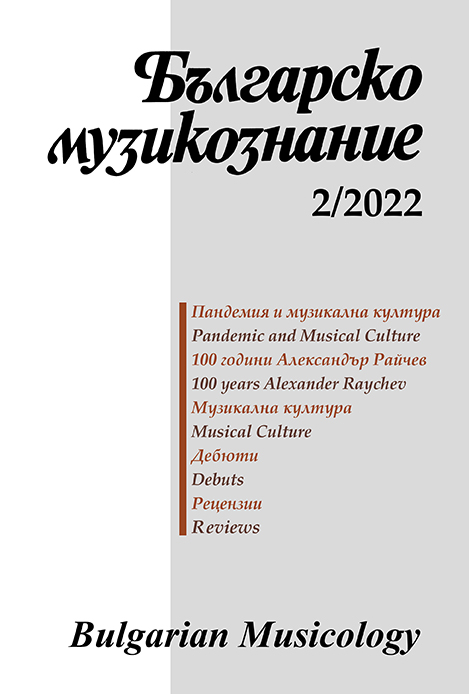Петя Цветанова: „Реквиемът: жанров образец и исторически образи”
Petya Tsvetanova: “The Requiem: Genre Pattern and Historical Images”
Author(s): Kristina YapovaSubject(s): Fine Arts / Performing Arts, Music
Published by: Институт за изследване на изкуствата, Българска академия на науките
Summary/Abstract: The Requiem poses a challenge to every musicologist who has chosen it as an object of research. For it needs to be defined where a definition can only be partial. The Requiem, as any genre of church music, immediately indicates that placing it into the framework of a musical genre cannot exhaust the problem of its content, because it is at the same time a part of another whole, namely, the western liturgy. On the other hand, this framework cannot be ignored as long as the Requiem has found its musical emanation in a work of art written by a composer. Each of the next steps is no less problematic because of the initially different affiliation of the subject of knowledge in relation to what the researcher is going to investigate, as modern musicology requires him/her to stay on the foundation of scientific reasoning and explore the apparatus developed (along with that of other sciences) since the Epoch of Modernity. Accepting the challenge, Petya Tzvetanova addresses the issue whose resolution elucidates the chosen object in its completeness, i.e. the question of meaning. Keeping to modern scientific approaches, she makes an attempt to incorporate into them a method of more than two thousand years of history, namely the method of Christian exegesis. Its extrapolation from the sphere of language, where it was initially born for the interpretation of sacred Biblical texts, into the realm of music is an endeavour as risky as it is necessary because it provides an alternative enabling the arrival at the church meaning of music, i.e. the meaning of the indivisible unity of word and music in every liturgical form and genre. One of the author’s main purposes is to prove the thesis that each of the examined requiems is emblematic of one of the layers of full meaning (sensus plenior): the requiems by Brahms and Verdi in terms of historical meaning, Britten’s “War Requiem” in terms of allegorical one, the “Polish Requiem” by Penderecki in terms of tropological one, and Mozart’s Requiem in terms of the anagogical layer of meaning.
Journal: Българско музикознание
- Issue Year: 2022
- Issue No: 2
- Page Range: 101-109
- Page Count: 9
- Language: Bulgarian
- Content File-PDF

